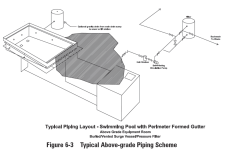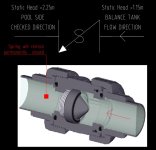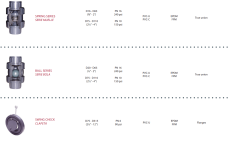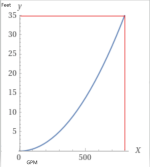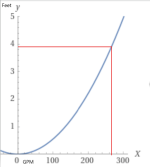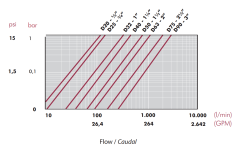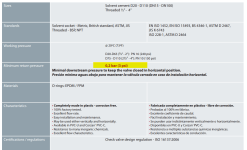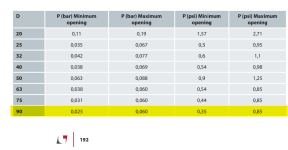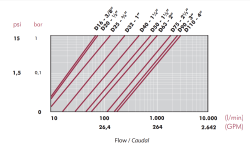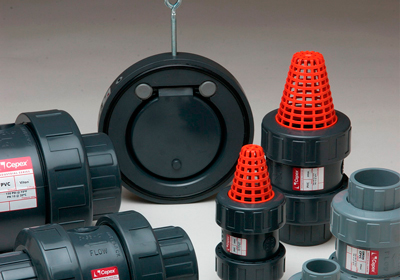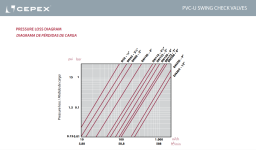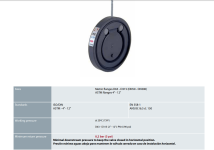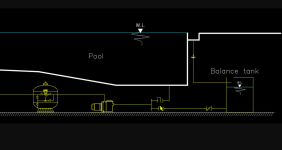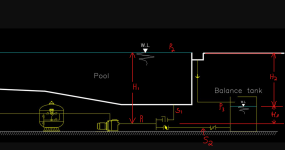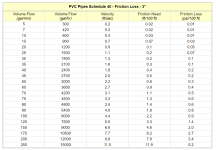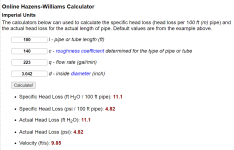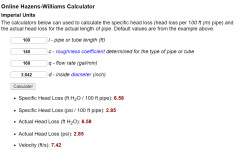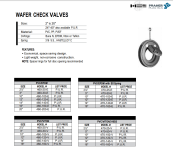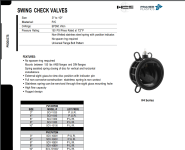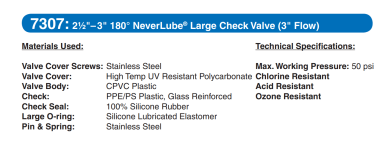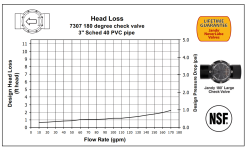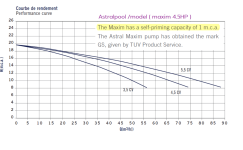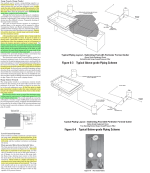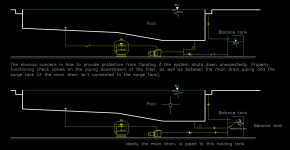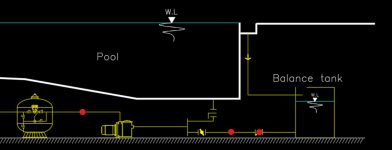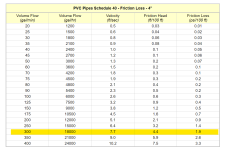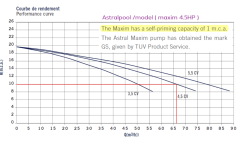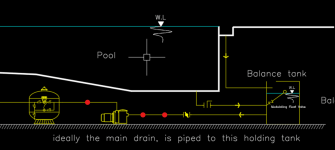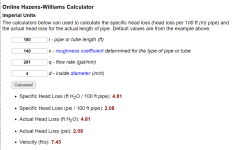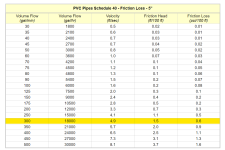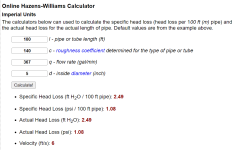Greetings of respect to every member and moderator in this wonderful forum .
I hope to find what I need through your advice
I'm having a problem with the flow between the pool and the overflow tank, when the pump is shout-off mode
In the simplified hydraulic system attached to the pictures, what is the method through which the flow of pool water can be prevented from causing an overflow of the balance tank water?
Note that
-valves cannot control the value of hydrostatic pressure
-When a natural non-return valve similar to a Hartford loop is implemented that rises above the pool water level, the problem of the appearance of a back siphone remains.
-Sometimes we need a full flow from the pool for the purpose of water circulation and for another purpose mode related to a locally invented heating system, and this is done by closing the water flow valves of the balance tank.
-There is a problem with the type of spring non-return valve. It is not possible to achieve full crack pressure that allows the valve to be opened completely, which necessitates opening the pool floor water drainage valves by more than 60%.
-When the pool water flow valves are not opened more than 60%, there is a significant decrease in the available NPSH value.
-I hope I have conveyed the idea to you completely. What I want is a simple, traditional method that allows you to prevent the pool water from causing an overflow of the balance tank water without manual intervention or operation.
Also how can I use and understand the included spring check valve spreadsheet
I live in a country where there are not many types of valves with advanced technology, and I want a simple solution that meets the desired purpose.
Thank you. I have always learned a lot from this forum and I hope this problem will be solved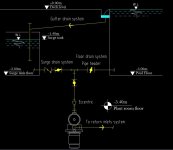
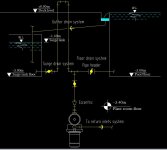
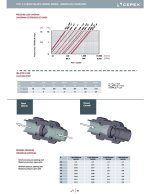
I hope to find what I need through your advice
I'm having a problem with the flow between the pool and the overflow tank, when the pump is shout-off mode
In the simplified hydraulic system attached to the pictures, what is the method through which the flow of pool water can be prevented from causing an overflow of the balance tank water?
Note that
-valves cannot control the value of hydrostatic pressure
-When a natural non-return valve similar to a Hartford loop is implemented that rises above the pool water level, the problem of the appearance of a back siphone remains.
-Sometimes we need a full flow from the pool for the purpose of water circulation and for another purpose mode related to a locally invented heating system, and this is done by closing the water flow valves of the balance tank.
-There is a problem with the type of spring non-return valve. It is not possible to achieve full crack pressure that allows the valve to be opened completely, which necessitates opening the pool floor water drainage valves by more than 60%.
-When the pool water flow valves are not opened more than 60%, there is a significant decrease in the available NPSH value.
-I hope I have conveyed the idea to you completely. What I want is a simple, traditional method that allows you to prevent the pool water from causing an overflow of the balance tank water without manual intervention or operation.
Also how can I use and understand the included spring check valve spreadsheet
I live in a country where there are not many types of valves with advanced technology, and I want a simple solution that meets the desired purpose.
Thank you. I have always learned a lot from this forum and I hope this problem will be solved





